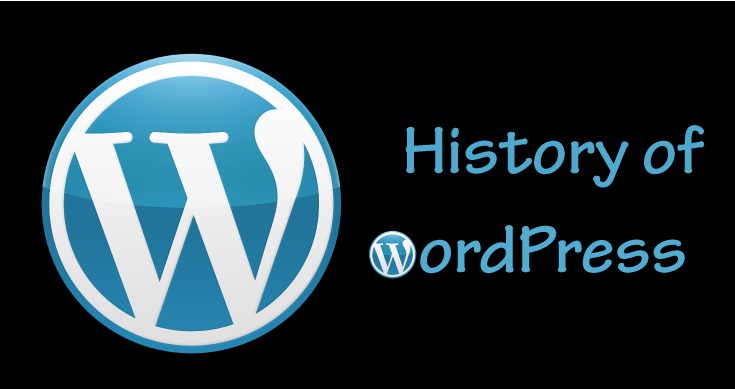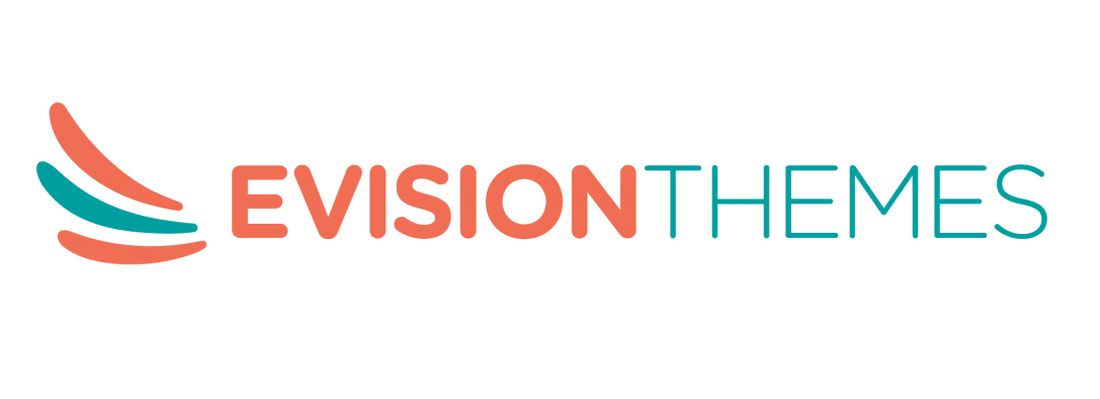If you are a WordPress lover then you may want to know the history of WordPress. In this article we will tell you the history of WordPress. Therefore, reading this article you’ll learn how it came into existence and where is it now?
Dominating more than 76% of the market, WordPress is the most popular content management system (CMS). As a matter of fact, it is absolutely free and is an open-source platform. Moreover, WordPress is based on PHP and MySQL. It comes in two categories: WordPress.com (free-hosted) and WordPress.org (self-hosted).
As of February 2017, it powers 27.5% of the top 10 million websites. Moreover, many notable sites use WordPress. However, many people have a wrong belief that using WordPress you can only create blogs. There are many reasons for its popularity.
History of WordPress

WordPress is modern software, but history of WordPress and development go back to 2001. As a matter of fact, WordPress is the successful successor of existing blogging software b2/cafelog. The b2/cafelog was estimated to have been installed on approximately 2,000 blogs as of May 2003. In fact, it was written in PHP for use with MySQL by Michel Valdrighi. He is now a contributing developer to WordPress. Although WordPress is the official successor, another project, b2evolution, is in active development as well.
WordPress first appeared in 2003. It was due to the joint effort between Matt Mullenweg and Mike Little to create a fork of b2. Christine Selleck Tremoulet, a friend of Mullenweg, suggested the name WordPress.
In 2004 the licensing terms for the competing Movable Type package were changed by Six Apart. As a result, many of its most influential users migrated to WordPress. Then, by October 2009 the Open Source CMS MarketShare published a report. It concluded that WordPress enjoyed the greatest brand strength of any open-source CMS.
Release History of WordPress
The most recent stable version is WordPress 4.8. The table below shows the release history of WordPress. From the first version, version 0.7, to the most recent, version 4.8, WordPress has grown.
2003 to 2005
It was also equipped with a new default template (code named Kubrick). designed by Michael Heilemann.
| Version | Code name | Release date | Notes |
|---|---|---|---|
| 0.7 | none | May 27, 2003 | Used the same file structure as its predecessor, b2/cafelog, and continued the numbering from its last release, 0.6. Only 0.71-gold is available for download in the official WordPress Release Archive page. |
| 1.0 | Davis | January 3, 2004 | Added search engine friendly permalinks, multiple categories, dead simple installation and upgrade, comment moderation, XFN support, Atom support. |
| 1.2 | Mingus | May 22, 2004 | Added support of Plugins; which same identification headers are used unchanged in WordPress releases as of 2011. |
| 1.5 | Strayhorn | February 17, 2005 | Added a range of vital features, such as ability to manage static pages and a template/Theme system. |
2006 to 2008
| Version | Code name | Release date | Notes |
|---|---|---|---|
| 2.0 | Duke | December 31, 2005 | Added rich editing, better administration tools, image uploading, faster posting, improved import system, fully overhauled the back end, and various improvements to Plugin developers. |
| 2.1 | Ella | January 22, 2007 | Corrected security issues, redesigned interface, enhanced editing tools (including integrated spell check and auto save), and improved content management options. |
| 2.2 | Getz | May 16, 2007 | Added widget support for templates, updated Atom feed support, and speed optimizations. |
| 2.3 | Dexter | September 24, 2007 | Added native tagging support, new taxonomy system for categories, and easy notification of updates, fully supports Atom 1.0, with the publishing protocol, and some much needed security fixes. |
| 2.5 | Brecker | March 29, 2008 | Major revamp to the dashboard, dashboard widgets, multi-file upload, extended search, improved editor, improved plugin system and more. |
| 2.6 | Tyner | July 15, 2008 | Added new features that made WordPress a more powerful CMS: it can now track changes to every post and page and allow easy posting from anywhere on the web. |
| 2.7 | Coltrane | December 11, 2008 | Administration interface redesigned fully, added automatic upgrades and installing plugins, from within the administration interface. |
2009 to 2011
It provides easy access to many critical functions, such as comments and updates. Includes internal linking abilities, a newly streamlined writing interface, and many other changes.
| Version | Code name | Release date | Notes |
|---|---|---|---|
| 2.8 | Baker | June 10, 2009 | Added improvements in speed, automatic installing of themes from within administration interface, introduces the CodePress editor for syntax highlighting and a redesigned widget interface. |
| 2.9 | Carmen | December 19, 2009 | Added global undo, built-in image editor, batch plugin updating, and many less visible tweaks. |
| 3.0 | Thelonious | June 17, 2010 | Added a new theme APIs, merge WordPress and WordPress MU, creating the new multi-site functionality, new default theme “Twenty Ten” and a refreshed, lighter admin UI. |
| 3.1 | Reinhardt | February 23, 2011 | Added the Admin Bar, which is displayed on all blog pages when an admin is logged in, and Post Format, best explained as a Tumblr like micro-blogging feature. |
| 3.2 | Gershwin | July 4, 2011 | Focused on making WordPress faster and lighter. Released only four months after version 3.1, reflecting the growing speed of development in the WordPress community. |
| 3.3 | Sonny | December 12, 2011 | Focused on making WordPress friendlier for beginners and tablet computer users. |
2012 to 2014
3.7BasieOctober 24, 2013Automatically apply maintenance and security updates in the background, stronger password recommendations, support for automatically installing the right language files and keeping them up to date.3.8ParkerDecember 12, 2013Improved admin interface, responsive design for mobile devices, new typography using Open Sans, admin color schemes, redesigned theme management interface, simplified main dashboard, “Twenty Fourteen” magazine style default theme, second release using “Plugin-first development process”.
| Version | Code name | Release date | Notes |
|---|---|---|---|
| 3.4 | Green | June 13, 2012 | Focused on improvements to theme customization, Twitter integration and several minor changes. |
| 3.5 | Elvin | December 11, 2012 | Support for the Retina Display, color picker, new default theme “Twenty Twelve”, improved image workflow. |
| 3.6 | Oscar | August 1, 2013 | New default theme “Twenty Thirteen”, admin enhancements, post formats UI update, menus UI improvements, new revision system, autosave and post locking. |
| 3.9 | Smith | April 16, 2014 | Improvements to editor for media, live widget and header previews, new theme browser. |
| 4.0 | Benny | September 4, 2014 | Improved media management, embeds, writing interface, easy language change, theme customizer, plugin discovery and compatibility with PHP 5.5 and MySQL 5.6. |
2015 to 2017
| Version | Code name | Release date | Notes |
|---|---|---|---|
| 4.1 | Dinah | December 18, 2014 | Twenty Fifteen as the new default theme, distraction-free writing, easy language switch, Vine embeds and plugin recommendations. |
| 4.2 | Powell | April 23, 2015 | New “Press This” features, improved characters support, emoji support, improved customizer, new embeds and updated plugin system. |
| 4.3 | Billie | August 18, 2015 | Focus on mobile experience, better passwords and improved customizer. |
| 4.4 | Clifford | December 8, 2015 | Introduction of “Twenty Sixteen” theme, and improved responsive images and embeds. |
| 4.5 | Coleman | April 12, 2016 | Added inline linking, formatting shortcuts, live responsive previews, and other updates under the hood. |
| 4.6 | Pepper | August 16, 2016 | Added streamlined updates, native fonts, editor improvements with inline link checker and content recovery, and other updates under the hood. |
| 4.7 | Vaughan | December 6, 2016 | Comes with new default theme “Twenty Seventeen”, Video Header Support, PDF preview, custom CSS in live preview, editor Improvements, and other updates under the hood. |
| 4.8 | Evans | June 8, 2017 | The next-generation editor. Additional specific goals include the TinyMCE inline element / link boundaries, new media widgets, WYSIWYG in text widget. End Support for Internet Explorer Versions 8, 9, and 10. |
In Conclusion
So, this was the history of WordPress and the release history of WordPress.
If you like this article and want to get more stuffs like this then please follow us on Facebook, Twitter, LinkedIn. You may also like some of our other articles.
When did you first start using WordPress? How has your experience been? Feel free to share your in the comment section below.
